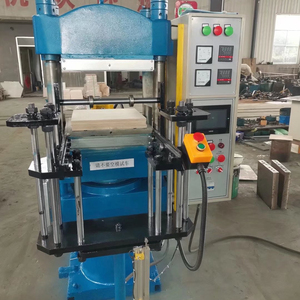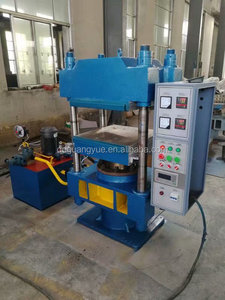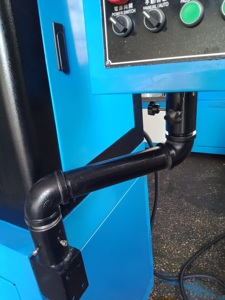
All categories
Featured selections
Trade Assurance
Buyer Central
Help Center
Get the app
Become a supplier

(2810 products available)




















A rubber compression molding machine is used to make products from rubber through a process called compression molding. The machine comes in three types: hydraulic, electric, and hybrid.
Hydraulic rubber compression molding machine:
A hydraulic rubber compression molding machine uses hydraulics, a technology that uses liquid under pressure, to operate and control the machine. This machine can mold all kinds of rubber. It is usually bigger than the others. It is strong and powerful, so it can mold much heavier and larger rubber products. Many parts of this machine are worked by hydraulics, so it can easily and smoothly compress the rubber. Businesses often choose this machine because it handles complex and big molds better.
Electric rubber compression molding machine:
An electric rubber compression molding machine uses electricity as its power source. This makes the machine smaller and more efficient. It works faster and uses less energy. Usually, the electric rubber molding machine works by pressing rubber materials with heat and pressure to shape them into final products. This compression process happens in two different ways: inline compression and breakout compression. Inline compression is when products get made in a single step. On the other hand, break-out compression is when parts are first molded and then secondary cured. The machine also has different molding methods, including tray compression, batch compression, and continuous compression.
Hybrid rubber compression molding machine:
A hybrid rubber compression molding machine combines two things: hydraulic and electric. It gives the benefits of both. It is strong and fast. It uses less power than all-electric machines. The machine has more speed and precision, so it can produce excellent products at high volume and lower operating costs.
It is very important to perform regular maintenance on the rubber compression molding machine to keep it in good condition and working properly over a long period of time. Regular maintenance can help prevent problems, reduce wear and tear, and extend the machine's lifespan. Scheduled maintenance, like checking and lubricating parts, inspecting components regularly, and replacing worn-out parts will help the molding machine operate smoothly and reliably for many years with less downtime for repairs. Taking good care of the machine through routine maintenance will ensure it continues to function well, make quality products, and have a long service life with minimal need for frequent major servicing or fixes.
The compression molding machine is maintained through regular cleaning, lubrication, and routine replacement of parts. The surfaces of the machine should be cleaned on a regular basis to get rid of dust and material residue. Components that slide or rub against each other, like guides and bearings, should be lubricated with the right oil or grease to keep them from wearing out too fast. Any parts that have gone bad or become misshapen over time, such as seals, gaskets, and hoses, should be replaced periodically to maintain compression molding machines' effectiveness and reliability. In summary, regular cleaning, applying lubrication, and timely replacement of worn parts will keep the compression molding equipment running smoothly and for a long time. This will help minimize the need for frequent repairs and maximize its availability for production use.
Rubber compression molding machines make many efficiency-increasing, cost-cutting industrial-use rubber products. Industries that benefit from these machines include the following:
Automotive
The rubber compression machine molds car engine mounts, door seals, window seals, exhaust hangers, boots, grommets, bellows, and damping mounts. These products are made from natural rubber, thermoplastics, and EPDM. They help reduce noise and vibrations within the car and between the car components. EPDM is often used for products that are exposed to the elements because it gives a good lifespan.
Medical
The healthcare system uses rubber compression molding machines to mold medical suckers, syringe tips, seals, masks, stoppers, and catheter valves. Compression machines make precise, contamination-free products. Medical rubber products are made with high-quality material to ensure patient safety.
Telecommunications
This industry requires rubber grommets, molds, boots, sealing rings, T-connectors, and damping and insulation products. The durability of rubber makes it ideal for use in telecommunication products.
Consumer Goods
Rubber compression molding machines are also used to create household items. These include but are not limited to drawer and cabinet bumpers, handle grips, floor mats, tool grips, stoppers, and ice cube trays. Rubber compression molding creates stoppers and bumpers precisely.
Aerospace & Defense
Aerospace machines mold compression rubber seals, gaskets, bellows, boots, bumpers, and insulation supports. The materials previously mentioned are commonly used in the aerospace industry because they can withstand the high insulation and pressure demands.
Plumbing
Rubber compression plumbing products include seals, gaskets, O-rings, and insulator sleeves. Rubber seals and gaskets give plumbing solutions their renowned leak-free ability. Insulator sleeves help to prevent heat loss in the pipes.
Electrical
Electricity uses rubber grommets, seals, insulation sleeves, and custom components. Rubber is an insulator. It helps to prevent current leakages and protects electrical appliances from dust and moisture.
There are a number of tips to ensure buyers get the right rubber compression molding press for their production needs. First, they should identify the types of materials the machines can work with. Also, consider the machine's production capacity. This refers to the volume and speed of production the machine can achieve. Next, buyers should evaluate the machine's precision and accuracy. The level of precision the machine can achieve affects the quality of the final products. Also, buyers should look for machines that offer flexibility in terms of adapting to different types of molds.
Another important area to consider is the level of automation the machine offers. Does it have manual, semi-automatic, or fully automatic operations? Depending on the skill level of the workforce, buyers may need a fully automatic machine or one with manual operating features. Additionally, buyers should consider the compression molding machine's size and space requirements. Buyers in the molding machine's ability to integrate with existing production lines and mold systems may also be a factor in their decision-making process.
The machine's energy efficiency and consumption are also important factors to consider, as these affect operating costs. Rubber compression molding machines with energy-saving capabilities help reduce costs. Buyers should also consider the maintenance and service requirements of the machine. What is the machine's ease of maintenance, service availability, and spare parts' accessibility?
Finally, buyers should take some time to review safety features of the molding machine. This includes overload protection, emergency stop buttons, safety interlocks, etc. Looking at all these features helps ensure a safe operating environment.
Q1: What kind of materials can be molded using a rubber compression molding machine?
A1: The machine can be used to mold various materials, including elastomers like natural rubber and synthetic rubber, plastics, composite materials, and thermosetting materials.
Q2: What types of rubber compression molding machines are available for sale?
A2: There are different machines for rubber compression molding available. These include double-layer machines, automatic feeding machines and pneumatic machines, among others. Each type has unique features to suit different production needs.
Q3: How does a rubber compression molding machine work?
A3: The machine works by heating and applying pressure to the rubber material until it cures and takes the shape of the mold. This process involves placing the pre-measured raw rubber into the heated mold cavity, closing the mold, and applying pressure while controlling the temperature and time. Once the curing time is complete, the mold is opened, and the molded part is removed.
Q4: What are the advantages of using a rubber compression molding machine in manufacturing?
A4: The machine offers several benefits. It is cost-effective for high-volume production of simple parts with low material waste. The equipment is also easy to operate, and the production process is fast. Parts made with this method also have a solid constructed quality.